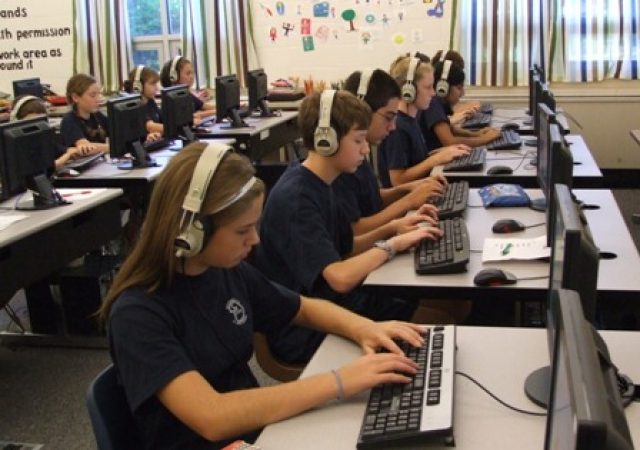What is the cost of a quality full-time, online education program?
It’s an important question if Virginia’s movement towards less costly “virtual schools” is to continue moving forward. With places like Singapore and the European Union having expanded their online learning programs, the issue has international implications for Virginia’s students.
Today, more than 200,000 K-12 students in America are full-time students in full-time online schools. That means they can live anywhere and participate in a “virtual school” located somewhere else in their state. In Virginia, about 450 students receive their full-time education that way.
Two years ago, the Virginia General Assembly created criteria for establishing full-time virtual programs, but left inequities in the funding mechanism. By relying only on state funding to fund programs educating students throughout the state, very few school divisions found it economically viable to establish full-time virtual schools – and those that did found it necessary to place a “cap” on the number of students they could enroll.
Governor McDonnell, Senator Steve Newman, and Delegate Richard “Dickie” Bell are seeking this year to change that.
Newman and Bell’s legislation would recognize that virtual school students – “students without borders” who can live anywhere in the state and be taught from any school division in the state – require a new way of looking at education funding. Their bill, supported by the Governor, would transfer both the state share of required Standard of Quality (SOQ) funding as well as 76 percent of the required local SOQ match from the school division a student resides in to the school division providing services. The total would be capped at $6,500.
The bill has several benefits.
One is that it recognizes reduced costs for virtual school students (no transportation, no facilities, no libraries, clinics or band program, etc.) and transfers those savings to the local school division. It “de-links” virtual school funding from the traditional formula-driven “Average Daily Membership” model by looking at more of the true costs of virtual schools – a part of the Virginia Education Association’s 2012 Legislative Agenda.
Secondly, it offers a clear path to a quality education at about 60 percent of a “bricks and mortar” education. In FY 2010, school divisions spent an average of $11,020 per pupil, while the Governor’s proposal would ensure funding up to $6,500 per pupil. Again, the cost reductions are all imputed to the local school divisions.
Finally, it ensures a stable funding stream that would provide a quality online education – with the emphasis on quality.
The Governor’s legislation appears to ensure a range of funding for virtual schools somewhere between $5,800 and $6,500. That’s well inside the range suggested by a recent Thomas B. Fordham Institute study suggesting that a quality virtual school model costs between $5,100 and $7,700 per pupil, and echoes previous reports done by the International Association for K-12 Online Learning and the Wisconsin Joint Legislative Audit Committee. A recent Thomas Jefferson Institute paper, Students Without Borders, also reviewed those costs.
However, some have pointed out that, in a number of places, online providers are offering a virtual program for only $4,950 per child. The claim is made by some that this is “proof” that online programs can be offered for much less than $6,500.
In reality, it is proof that funding was inadequate for a quality online school. Comparing an online program costing less than $5,000 with one costing $6,500 is a little like comparing education in Arlington County ($19,000 per child) with that in King George County ($8,400 per child): The difference is in the services provided.
And that’s where the emphasis on quality comes in. An online rate of $4,950 doesn’t include electives, world languages or Advanced Placement courses. It doesn’t include guaranteeing computers, monitors, printers, scanners and internet access. It doesn’t include evening, one on one tutoring sessions. It doesn’t include field trips (yes, even virtual school students go on field trips). And it does not include the higher cost of a high school program.
Combined with his plans to establish new accreditation standards for full-time virtual schools, this is the challenge Governor McDonnell’s proposals are designed to meet: To ensure equal access to a quality virtual school program for every child in Virginia – regardless of where he or she might live.
In the 21st century, when Virginia’s children must compete not only with those in North Carolina or Maryland, but also with those in China and India, can we demand anything less?






